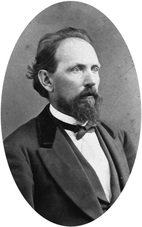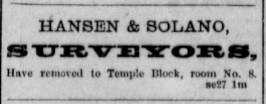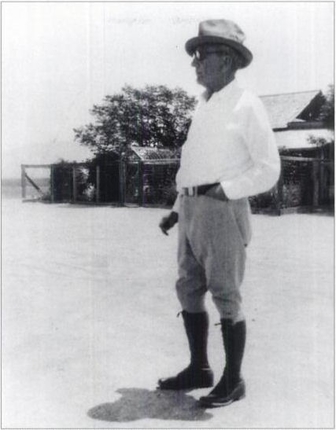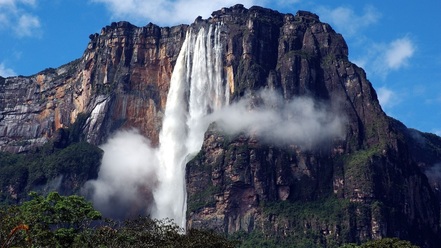|
Alfredo Solano, or Alfred as he was known for most of his adult life, was born in Los Angeles 02 May 1857, the second child and first son of Francisco Sales de Jesús Solano and María Rosa de las Mercedes Casanova, immigrants from Costa Rica about 1850. He died, also in Los Angeles, 14 November 1943 at age 86. He was married three times, to Ella T. Brooks, Minnie Belle Classey, and Kathryn E. Hathaway, and he produced no children. He is buried at Forest Lawn cemetery in Glendale, California. This is the first of a series of blogs that will feature the lives of "People of Solano Canyon" — individuals who are important to the development of the Solano Canyon community — from its founding in 1866 to the present day. More may be read about these Solano Canyon champions on their individual pages under History, People of Solano on this website.  George Hansen, ca. 1857 [Anaheim Public Library P457] George Hansen, ca. 1857 [Anaheim Public Library P457] A wag once said that the point to life is to make the distance between the dates on one's tombstone as great as possible; but it seems to me that it is the quality of what lies between those dates that is what really matters. By the latter definition, the life of Alfred Solano was a full one, and one that truly mattered. Alfred's parents immigrated to Los Angeles from Costa Rica sometime between November 1847, when Rosa Casanova's youngest sister, María Teodora, was baptized in Costa Rica, and April 1850, when her father, Antonio Casanova, died in Los Angeles of bronchitis. [Click here for an example of how a family story that has been passed down from generation-to-generation can be completely misleading even though it contains a grain of truth.] Alfred is found in the 1870 census, at the age of 14, living in the household of George Hansen and Hansen's long-time, live-in housekeeper, Francisca García. In 1880, the two men were lodgers in the home of J. S. Crawford, a Los Angeles dentist and a widower. Exactly when, and how, Alfred made Hansen's acquaintance is not known; but Hansen was a surveyor and civil engineer, and it is likely that Alfred took an interest in the work. Hansen became Alfred's mentor, and the two of them went into the surveying business together as Hansen & Solano, an arrangement that was maintained until Hansen's death in 1897. When he died, George Hansen left his entire estate to Alfred. Alfred is referred to in several places and at different times as Hansen's ward, although whether that is true in a legal sense is not known. In 1875, George Hansen and his protégé, Alfred, left Los Angeles by steamer and traveled to San Francisco. The following day, they took the ferry across San Francisco Bay to Berkeley, where Alfred was introduced to the Chancellor of the University of California. As a result of that meeting, Alfred was enrolled in the Engineering College. He began his civil engineering studies in Berkeley at the start of the next term, but he probably only attended for one or two semesters before returning to Los Angeles, apparently homesick. There is no record of his course of study, nor of whether he graduated. Whether Alfred ever lived with his parents and siblings in the adobe that his father build on the stream in what became known as Solano Cañon — later Solano Ravine — is not known, but after his father died in 1871, it is known from his diaries that Alfred helped care for the needs of his mother, Rosa Casanova, and his five siblings: Josefina, Alejandro, María, Manuel, and Alonzo. In one entry, he documents his having purchased two bibles, one for each of his two sisters. One of the bibles was destroyed in a house fire about 25 years ago; the other one is still with a descendant, and which the author has seen. It contains some valuable genealogical information. Alfred took pains to preserve the 87 acres of land that his father had purchased from the City of Los Angeles in 1866. He refers in his diaries to his awareness of the value of his family's retaining the land as a legacy. At the same time, he threw himself into his surveying work with George Hansen as well as the social scene in Los Angeles. He was one of the founding members of the Los Angeles Athletic Club (LAAC) and, in what may be the only extant photograph of him as a young man, Alfred was a member of the LAAC baseball team in 1884. Alfred is the person in the back row, at the far left. After Alfred married the widow, Ella T. Brooks, in 1886, the couple quickly rose to prominence in Los Angeles social circles. They built a large mansion on Figueroa Street at 23rd Street in 1896 and, in 1904, they purchased the 30-room Stimson House, which still stands at 2421 South Figueroa Street. They entertained lavishly and Alfred acquired considerable political influence, although he never ran for political office himself. It was partly that political influence and the respect with which he was held by the City Council that allowed him to be a responsible conservator or his parents' land in the Stone Quarry Hills. He was, at various times, Assistant City Surveyor and City Surveyor of Los Angeles, and County Surveyor of Los Angeles County. Although Alfred never lived in Solano Canyon — at least, not as an adult — he is nevertheless the single person who is most responsible for the existence of the Solano Canyon community today. This is one of only a small handful of snapshots of Alfred Solano as an adult. This photograph was taken in the Palo Verde Valley in Blythe, California about 1930. Alfred Solano did many other interesting things in his life. He taught mining engineering at USC in 1918 (the author has one of his examinations), prospected for minerals in California and Arizona and gems in South America (the author has an emerald ring made from one of the stones Alfred brought back), and he told the author's father that he was with Jimmy Angel when Angel accidentally discovered Angel Falls, the world's highest waterfall, in Venezuela in 1933; Alfred was 75 years old at the time. Angel Falls has a 3,212-foot total drop, with a free drop of 2,648 feet. It is worth watching this video of Angel Falls, and reading this article. This fall is named for Jimmy Angel, an adventurous pilot from Missouri, United States, who flew to the air circus Lindberg. James Crawford Angel (Jimmy Angel) is a modern legend. He saw the waterfall for the first time in 1933 with his partner while searching for the legendary McCracken River of Gold, or the Golden City. Jimmy Angel's partner mentioned in the article is Alfred Solano, patron of Solano Canyon.
|
About the AuthorLawrence Bouett is a retired research scientist and registered professional engineer who now conducts historical and genealogical research full-time. A ninth-generation Californian, his primary historical research interests are Los Angeles in general and the Stone Quarry Hills in particular. His ancestors arrived in California with Portolá in 1769 and came to Los Angeles from Mission San Gabriel with the pobladores on September 4, 1781. Lawrence Bouett may be contacted directly here.
Archives
July 2018
Categories |








 RSS Feed
RSS Feed
